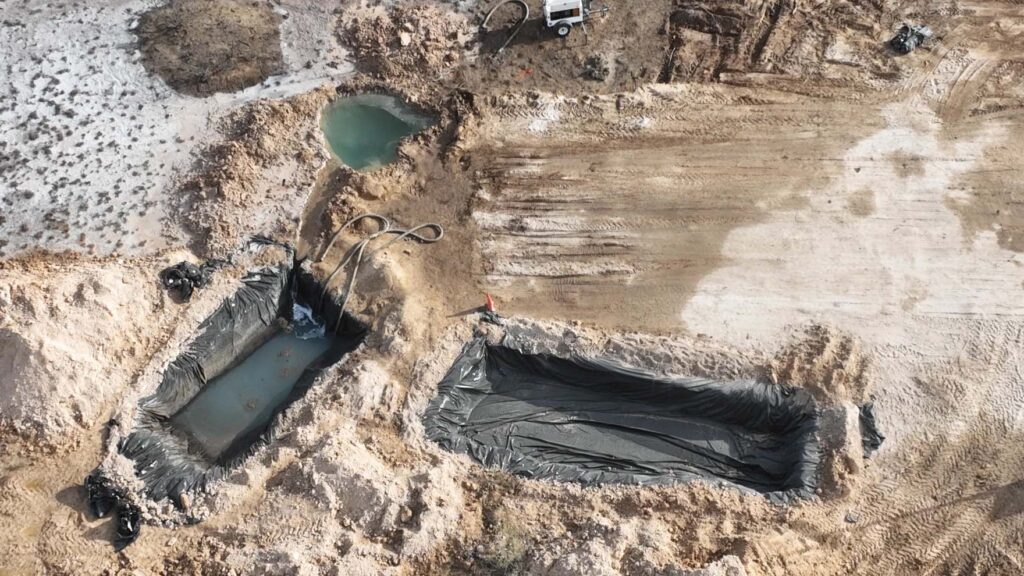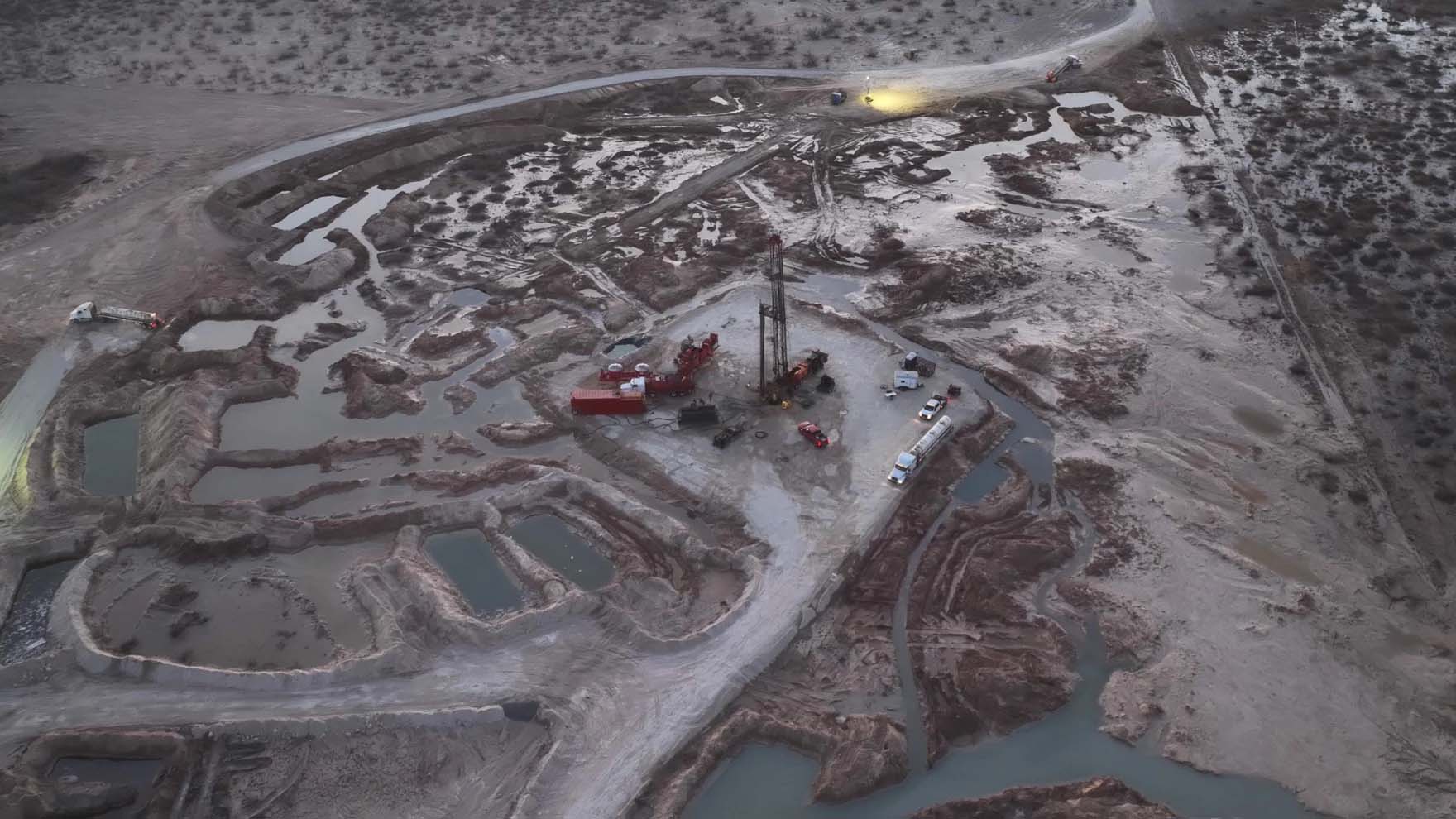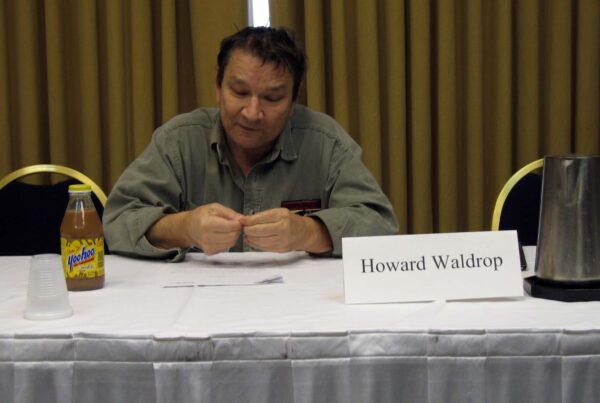From Marfa Public Radio:
In the oil fields north of Fort Stockton, a large leak discovered at the beginning of December has joined a growing list of aging oil and gas wells in the area that have sat quietly for decades only to reawaken and spew toxic water.
On Dec. 7, the Railroad Commission of Texas dispatched an inspector to investigate a large amount of water saturating ranchland in the southwestern part of Crane County. Brine water had burst from the desert ground — creating a marsh-like scene filled with pools ranging in size and color.
“There was a big crack,” said Sarah Stogner, who saw the scene firsthand in December soon after it was discovered. “You could hear the water flowing underneath your feet, and you could see bubbles, it was like being at the beach.”
Stogner is an attorney and manages a ranch in the area, but she is better known as an outspoken critic of Railroad Commission, the state’s oil and gas regulator. She ran to join the commission in 2022 and part of her platform focused on abandoned oil and gas wells across the state that pose a danger to the environment if allowed to leak, which she calls “zombie wells.”
According to Stogner, the Crane County leak is part of a larger trend caused by wastewater from oil and gas production being injected underground through salt water disposal wells. Stogner believes this process is causing the pressure underground to rise — driving brine water to break through aging wells, and now the land, to flow to the surface.
“If we don’t stop this now we are going to have complete and utter ecological devastation anywhere we’ve had historic oil and gas wells,” Stogner said.
Earlier this week, she made her way back out to the site and captured photos of the state’s effort to plug the leak, which has continued to spread over the last month.
Railroad Commission documents obtained by Marfa Public Radio detailed some of the work that’s been done to halt the Crane County leak.
In early December, a Railroad Commission inspector found the water coming from the leak was highly saturated with salts — recording chlorides at a level of 154,000 parts per million. In another report, agency staff noted that at one point approximately 330 barrels of water was being released an hour — which is equivalent to 13,860 gallons.
In the days after being discovered, it seemed difficult for workers to identify all of the sources of water. But by Dec. 16, multiple points were found along with two wells in the vicinity of the original leak.
In this time, the agency’s remediation efforts included digging pits to catch flowing water and bringing in vacuum trucks to transport the brine water away from the site. This effort, according to Railroad Commission documents, totaled a quarter of a million dollars in just 10 days.

Pits dug in an effort to capture the flowing salt water at the Crane County leak.
Photo Courtesy Of Sarah Stogner
At the request of the Railroad Commission, the Federal Aviation Agency established an approximately three-mile temporary no-fly zone around the leak to prevent drones from being flown near the worksite. Initially, the restriction was only set to last for a few weeks, but now the measure has been extended until June.
This massive leak in Crane County is not an isolated event in this part of West Texas. Two years ago, a 100-foot geyser of salt water erupted from an abandoned oil and gas well. Before that, in 2021, a rancher feared that a leaking oil well on her property was contaminating her groundwater and believed it was part of a larger problem on her land.
And just south of these two high-profile cases lies a 60-acre body of very salty water known as Lake Boehmer. For years, water has flowed freely from a former oil and gas well along with hydrogen sulfide gas which can be deadly.
Bill Burch is currently running for a seat on the Railroad Commission as a Democrat, but he’s also an experienced oil and gas drilling engineer that’s worked on well-plugging projects in this area. Burch is concerned about a number of things when it comes to this leak, but he’s mainly worried about local aquifers because he believes the December leak is now contaminating groundwater zones.
“The worst thing about this one is that it’s toxic [and] radioactive produced water that is going into the groundwater,” said Burch. “That is a horrendous, worst-case scenario, catastrophic-level event to occur in oil and gas in West Texas.”
In an email to Marfa Public Radio, a spokesperson for the Railroad Commission said the agency has not received any reports that aquifers have been contaminated. However, they did not specify if any testing has been done to confirm that the leak has not breached any aquifers.
According to Burch, stricter requirements need to be implemented to ensure that operators in the oil and gas industry aren’t injecting too much waste water into the ground through salt water disposal wells.
“This is now definitive unquestionable proof that the future of usable groundwater in Texas is at risk due to the salt water disposal issue,” he said.















